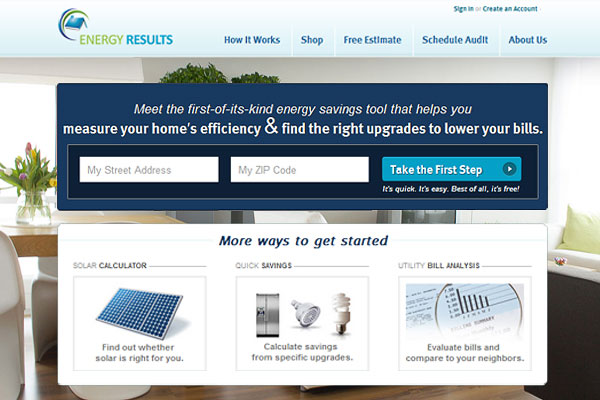
Thanks to upgrades scheduled to be introduced today to the Chicago-based website Energy Results, people who have boosted their homes’ green profile will find it easier to tout those improvements when it comes time to sell those residences.
Launched in 2010, Energy Results offers recommendations on how to make a home greener, from small things such as replacing light bulbs to big ones like installing solar power; it then connects homeowners to vendors of the needed products and services. Among the new upgrades is a dashboard function that tells homeowners how their current energy consumption compares to a year ago as well as to comparably sized homes in the neighborhood. Down the road, that’s something a seller could share with potential buyers.
According to James Carlin, the company’s president and cofounder, there’s another potential marketing tool that may develop. The upgraded website has an API, or data feed, of all the home energy profiles that the site’s users make public. Carlin hopes that online real-estate sites such as Trulia, Zillow, and Redfin will pick up that feed and add it to real-estate listings.
With either function, Carlin says, “you can show people that the operating costs of your home are significantly lower because you’ve made your home more efficient. That’s an effective marketing tool.”
The site is not only for people selling their homes; it’s for anyone looking to improve a home’s sustainability. Green retrofits of existing homes are gaining steam all the time. Yesterday Crain’s reported that the city of Chicago, with financial help from major utility companies, is piloting a program to help owners of single-family homes and apartment buildings fund green upgrades.
Carlin says that he and the company’s other founder, Jason Blumberg, left corporate careers in 2009 to start Energy Results because they believed that “a solution was desperately needed in residential home energy—helping people understand it and act on it.” Their site differs from others, such as the My Home EQ program, in that it attempts to “engage people,” Carlin says. “Don’t just tell them what they could do to their home. Take them the next step—to acting on it.”
Homeowners start by filling out an energy-use profile. Once the profile is finished, the site generates a list of improvements for that home; it also provides estimates of how much it would cost to make those upgrades, the potential savings, and the length of time it will take for those upgrades to pay for themselves. Site users can then click on links to recommended vendors who can perform the service or install the equipment that’s needed. “We can get you almost anything that we’ve recommended you do to the house,” he says.
Because they are based in Chicago, the website’s partners have lined up more contractors here than in other cities, Carlin says. Energy Results collects a commission from vendors only after work is completed, not simply for generating a lead on a sales call. Since Energy Results has a version of its program piloting in three Best Buy stores around the country, including the one at 2100 North Elston Avenue, Carlin says that he cannot disclose the number of Energy Results users due to a confidentiality agreement.
The goal of Energy Results, Carlin concludes, is to keep [visitors to the website] engaged, telling them month to month”—and year to year—“how their home is performing. This notion of energy efficiency is a marathon, not a sprint.”
Photograph: Courtesy of energyresults.com




Comments are closed.